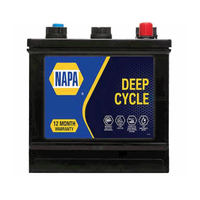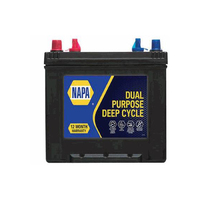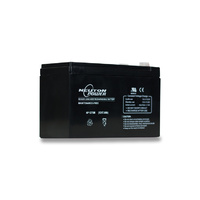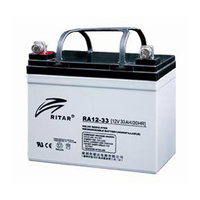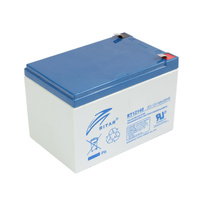Lead Acid Battery Ratings
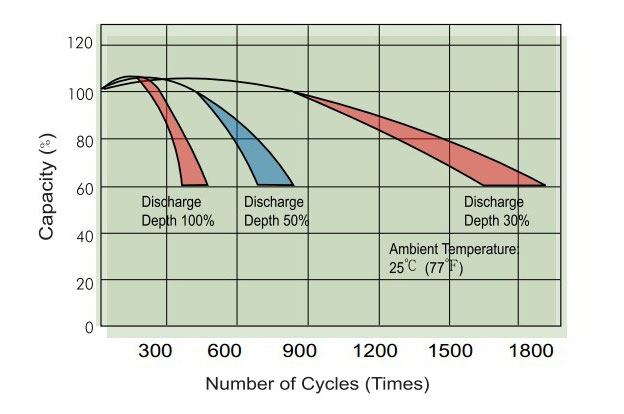
Ampere Hours – AHR or A/Hrs
AHR is a measure of a battery's ability to deliver a current over a specific period. The period is normally 20 hours; however some specific batteries AHR can be based on 10 hours. A batteries data sheet will have a 20 hour and 10 hour rating. Some data sheets will also indicate the batteries 5 hour, 3 hour and 1 hour rating. The actual AHR rating printed on the battery is traditionally based on the battery's 20 hour rating. Generally, this rating varies widely with the duration of the discharge period (known as Peukert's Law); therefore the value is typically only meaningful when the duration is specified.
For examples:
10 amp constant current for 20 hours (10x20) = 200 AHR at 20 hour rate.
8 amp constant current for 3 hours (8x3) = 24 AHR at 3 hour rate.
30 amp constant current for 1 hours (300x1) = 30 AHR at 1 hour rate.
In an application that requires 17amps for 3 hours, a 51 AHR battery (at 3 hour rate) would be needed. However, the 51 AHR delivered would be 100% capacity of this battery. Typically System Builders will specify a battery with 2.5-3 times the capacity required. This will dramatically extend the battery life and residual running time. The preferred charge cycle is also a factor in this equation. If charging every day is not an issue, a lower capacity battery can be used. If it is preferred that the battery be charged once a week, a larger capacity battery is needed.
Cold Cranking Amps – CCA
CCA (Cold Cranking Amps) is the number of amps a fully charged battery can deliver at -18 degrees celsius for 30 seconds, while not dropping below 7.2v (12v battery) or 1.2v per cell. Cold cranking amps are generally used to specify starting or cranking batteries. This rating is an indication of the amount of current it can provide. The larger the CCA rating, the higher the current the battery can provide. This means it is capable of turning over a larger engine. Temperature plays a big part in the equation. Colder climates require more power to turn over the same engine than warmer climates. Therefore, colder climate countries require much higher CCA rated batteries for similar applications.
Hot Cranking Amps - HCA
Similar in principle to the CCA rating, HCA rating is the measure of the number of amps a fully charged battery can deliver at 27 degrees for 30 seconds and not drop below 7.2v or 1.2v per cell.
Pulse Hot Cranking Amps - PHCA
Some manufacturers can chose to provide a PHCA rating for their battery products. PHCA is a measure that a fully charged battery (over 5 seconds) can deliver at -18 degrees celsius for 30 seconds and not drop below 7.2v or 1.2v per cell. This measure is similar to CCA (cold cranking amps) rating, but over 5 second duration.
Cranking Amps – CA
Cranking Amps (also known as Marine Cranking Amps) is a measure for the number of amps a fully charged battery can deliver at 0 degrees celsius for 30 seconds and not drop below 7.2v (12 volt battery) or 1.2v per cell.
Marine Cranking Amps – MCA
Marine cranking amps is the same rating as the CA (Cranking Amps). Some manufactures chose to use only an MCA rating on their batteries instead of CA. CA and MCA ratings are a measure of the number of amps a fully charged battery can deliver at 0 degrees celsius for 30 seconds and not drop below 7.2v (12 volt battery) or 1.2v per cell.
Typically if the battery is solely designed for marine applications the manufacturer will elect to use MCA for this rating.
Reserve Capacity – RC
Reserve Capacity is the time in minutes that a new fully charged lead acid battery can supply a current of 25amps and maintain a terminal voltage above 10.5v for a 12v or 5.25v for a 6v. This figure usually represents the approximate time that a vehicle will run with a night time electrical load, should its engine charging system fail.

